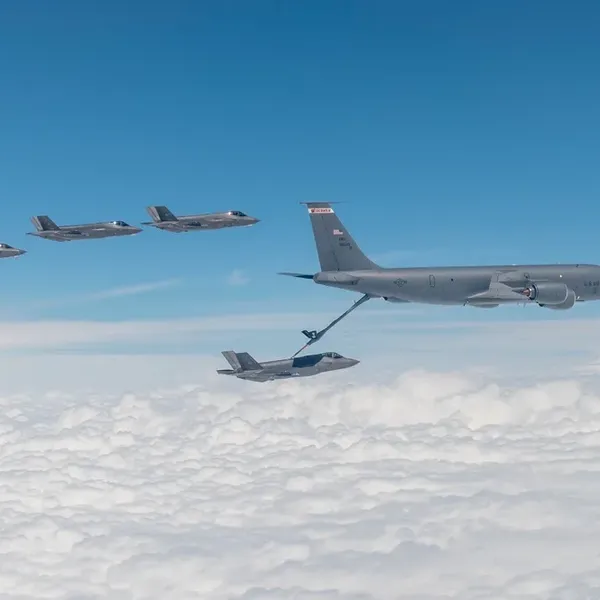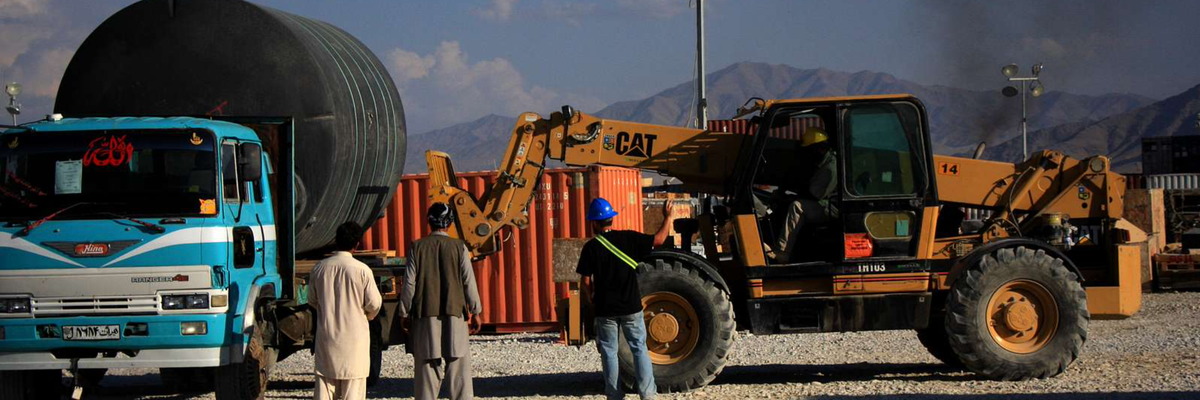Pentagon contractors operating in Afghanistan over the past two decades raked in nearly $108 billion--funds that "were distributed and spent with a significant lack of transparency," according to a report published Tuesday.
"These contracts show the shadowy 'camo economy' at work in Afghanistan."
"These contracts show the shadowy 'camo economy' at work in Afghanistan," said report author Heidi Peltier, director of programs for the Costs of War Project at Brown Univesity's Watson Institute for International and Public Affairs.
"Military contracting obscures where and how taxpayer money flows, who profits, and how much is lost to waste, fraud, and abuse," she added. "It also makes it difficult to know how many people are employed, injured, and killed through military contracting."
Based on Peltier's review of public contracting databases--USASpending.gov and the Federal Procurement Data System--just over a dozen U.S. Department of Defense (DOD) contractors got more than $44 billion, or about 41% of the almost $108 billion, from 2002 to this year.
As the document details:
In addition, thousands of smaller companies earned billions in contract spending, and about one-third of the contracts (in dollar terms) went to companies that are listed as "undisclosed" or "miscellaneous" in the data. These designations result from the contracts being given to foreign companies without a "DUNS" number, or they are undisclosed with national security or protection as a claimed rationale for secrecy. Whatever the reason, this creates an opacity that makes it impossible to know who exactly received U.S. taxpayer funds, what work was performed, how much profit was earned, and whether the intended purposes of the contracts were served.
Inadequate oversight, coupled with the issue of sub-contracting, results in a system in which the U.S. government pays contractors who then leave a trail of spending that is nearly impossible to follow.
"A number of companies performed services in Afghanistan under multiple different business names," the analysis notes. "A generous interpretation of this is that the businesses pursuing such practices were in fact performing different services. A less generous interpretation is that businesses can obscure how many contracts they are receiving as well as circumvent issues of ineligibility by operating under different names."
The report emphasizes that the almost $108 billion that Peltier focused on is "in addition to the trillions of dollars spent on DOD contracts performed in the U.S. over that period."
The contractors examined by Peltier were paid for construction, lodging, office supplies, refrigeration equipment, transportation, waste disposal, and weapons maintenance in the war-torn country. They operated various facilities--such as dining and troop housing--and were contracted for accounting, fuel, food, guard, and surveillance services.
During the nearly two-decade U.S. occupation, the analysis states, "contractors provided all types of goods and services that were essential to the U.S. military presence in Afghanistan, including services (such as weapons maintenance and fuel supply) that made the U.S. military dependent on and arguably vulnerable to the performance of contractors."
"Most contracts for work in Afghanistan ended or were rescinded by August 31, 2021, when U.S. troops fully withdrew," the report says. "Some contractor presence may remain, though it is difficult to know which companies and how many employees could still be working in service of the U.S. government in that country."
Transparency is a major focus of the document, which highlights that "lack of oversight by the Department of Defense, combined with waste, fraud, and abuse on the part of both contractors and government employees, resulted in billions of misallocated and misspent taxpayer dollars."
The analysis cites reports by the DOD Inspector General (DODIG) and Special Inspector General for Afghanistan Reconstruction (SIGAR). In one case involving insufficient voucher reviews for a major contract from 2015 to 2017, the new report notes, "one-fifth of them had questionable or undocumented expenses, totaling over $536 million."
In another case, SIGAR found that "a subcontractor of Lockheed Martin submitted fraudulent invoices that resulted in overbilling the Department of Defense millions of dollars."
Peltier's report also points to government watchdogs' findings of "incomplete and shoddy construction of school buildings, warehouses, and other facilities" as well as "bribery of U.S. officials to secure contracts."
SIGAR, in its quarterly report to Congress this past January, "conservatively estimated nearly 30% of U.S. appropriations for Afghanistan reconstruction from 2009 to 2019 was lost to waste, fraud, and abuse." The Pentagon was responsible for the bulk of that spending.
The Brown analysis explains that "the overpayment of illegitimate expenses, and the lack of oversight of contracts by DOD was compounded by yet another problem: In some cases, contractors were hired to perform oversight of other contractors, in lieu of the oversight that should have been performed by DOD."
Peltier told Responsible Statecraft--which exclusively reported on the new document--that the DODIG "also found oversight by the DOD itself to be insufficient or poorly executed, so really the oversight problems are both 'the fox guarding the hen house' as well as internal issues (which in some cases are because of corruption, and in other cases just poor execution)."
The researcher suggested that to help prevent abuse, "there should be a committee or other body to make determinations of whether certain contracts can legitimately be labeled as 'undisclosed.'"
"I would recommend the DOD reduce its contracting overall and return to providing more services in-house," Peltier added, referencing "services like weapons maintenance and security, but also things like food services and lodging, in order to have more command in fulfilling its own needs and reduce the use of contracts and the opportunities for waste, fraud, and abuse."
In a statement Tuesday, Stephanie Savell, co-director of the Costs of War Project, put Peltier's findings about Pentagon contractor spending into a broader context.
"One hundred billion is an enormous amount of money, but it's also just a drop in the bucket when it comes to the full costs of the post-9/11 wars," Savell noted. "Nearly a million people have lost their lives in these wars and U.S. taxpayers have paid over $2.3 trillion for the war in Afghanistan alone--and over $8 trillion total for the post-9/11 wars in other places as well."
"It's shocking," she said, "that the U.S. government hasn't had a serious reckoning with the U.S. militarized counterterrorism model and its human and financial costs over the past two decades."



